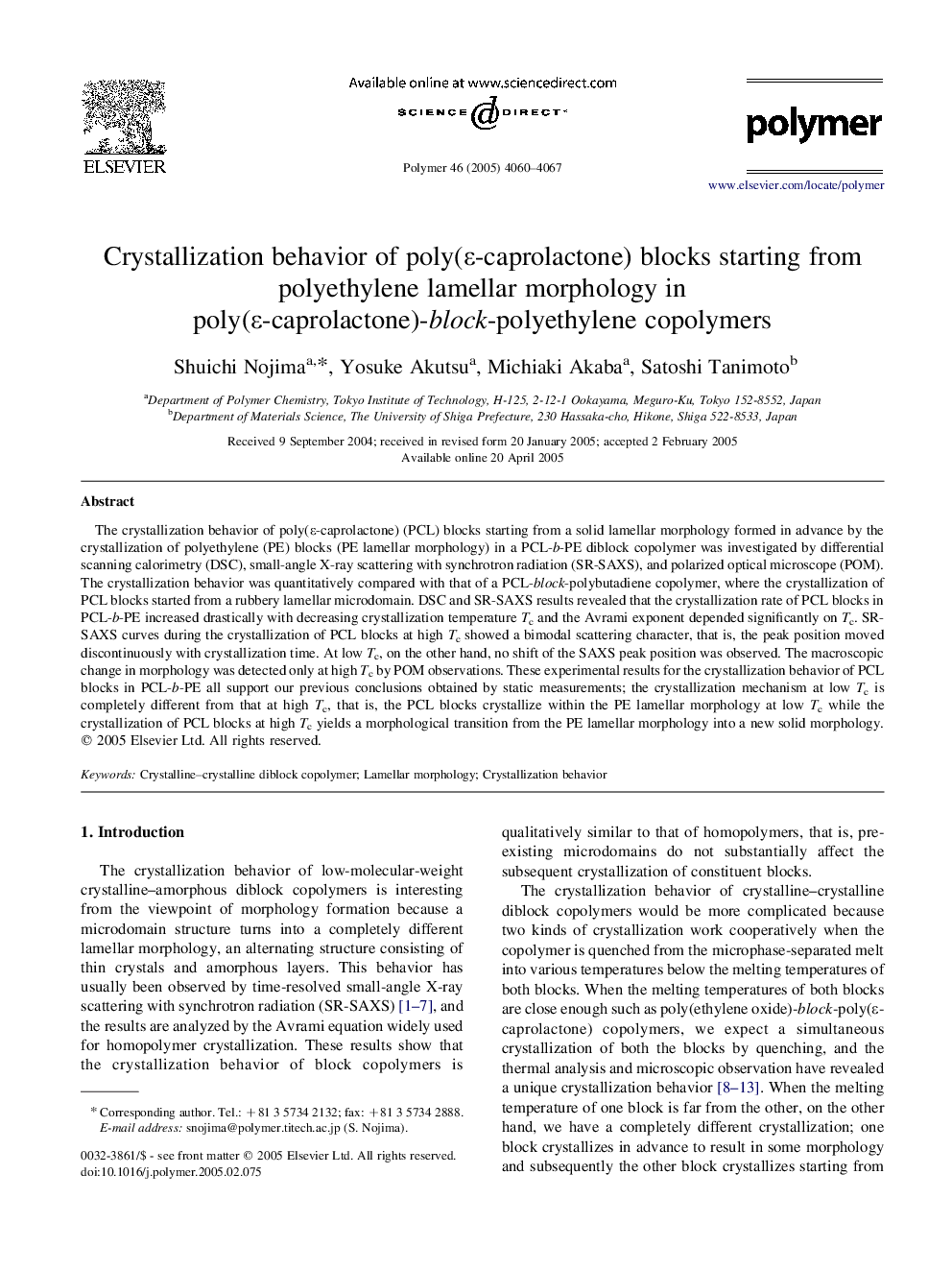| Article ID | Journal | Published Year | Pages | File Type |
|---|---|---|---|---|
| 5191857 | Polymer | 2005 | 8 Pages |
The crystallization behavior of poly(ε-caprolactone) (PCL) blocks starting from a solid lamellar morphology formed in advance by the crystallization of polyethylene (PE) blocks (PE lamellar morphology) in a PCL-b-PE diblock copolymer was investigated by differential scanning calorimetry (DSC), small-angle X-ray scattering with synchrotron radiation (SR-SAXS), and polarized optical microscope (POM). The crystallization behavior was quantitatively compared with that of a PCL-block-polybutadiene copolymer, where the crystallization of PCL blocks started from a rubbery lamellar microdomain. DSC and SR-SAXS results revealed that the crystallization rate of PCL blocks in PCL-b-PE increased drastically with decreasing crystallization temperature Tc and the Avrami exponent depended significantly on Tc. SR-SAXS curves during the crystallization of PCL blocks at high Tc showed a bimodal scattering character, that is, the peak position moved discontinuously with crystallization time. At low Tc, on the other hand, no shift of the SAXS peak position was observed. The macroscopic change in morphology was detected only at high Tc by POM observations. These experimental results for the crystallization behavior of PCL blocks in PCL-b-PE all support our previous conclusions obtained by static measurements; the crystallization mechanism at low Tc is completely different from that at high Tc, that is, the PCL blocks crystallize within the PE lamellar morphology at low Tc while the crystallization of PCL blocks at high Tc yields a morphological transition from the PE lamellar morphology into a new solid morphology.
